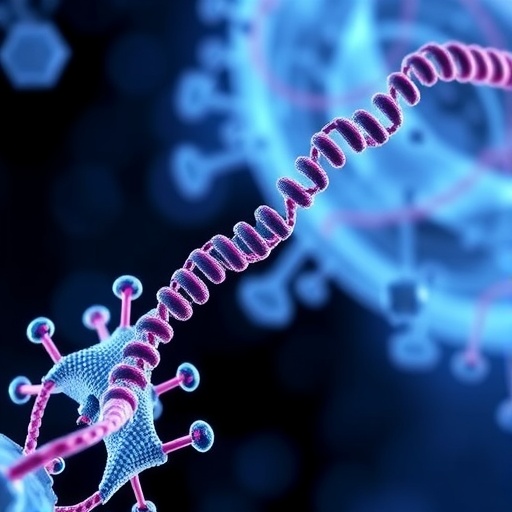FRANKFURT. Translation of the genetic code in proteins is a central process in life and takes place in the ribosome, a giant molecule consisting of two subunits. This is where long chains of amino acids are formed like on an assembly line. An interdisciplinary research group from Goethe University Frankfurt, the EMBL in Heidelberg, and the Gene Center of the University of Munich (LMU) has now succeeded in solving the structure of a central player in this process bound to the small ribosomal subunit: the protein containing a unique iron-sulphur domain with the nickname "Iron Hammer" splits the two subunits of the ribosome when a protein chain is completed so that production of a new protein can begin.
The two subunits of the ribosome have to be actively split once the protein chain is complete otherwise errors occur in mRNA translation: research ignored this fact for a long time. Central player in this "ribosome recycling" process is the essential and highly dynamic metalloenzyme ABCE1. The iron-sulphur domain of ABCE1, known as the "Iron Hammer", rotates and presses the ribosomal subunits apart like a lever.
To uncover this, the research group led by Professor Robert Tampé at the Institute of Biochemistry at Goethe University Frankfurt isolated a complex of the small ribosomal subunit with ABCE1 (post-splitting complex) by means of an innovative preparation method. This complex was chemically fixed and cut into pieces, while the original distance information was preserved.
At the EMBL in Heidelberg, the researchers used highly advanced mass spectrometry to analyse these small fragments and relate them to each other revealing their original distances on nanometre scale. The group in Munich then examined the reconstructed complex with a high-resolution cryogenic electron microscope and was able to reconstruct a 3D model of the post-splitting complex with tightly bound ABCE1 from a vast collection of single-particle images.
Professor Robert Tampé summarizes the significance of these results: "We have forced the rebellious and aggressive multi-domain enzyme ABCE1 into a new, unexpected state on the ribosome and used the combined expertise of three institutes to enrich textbook knowledge for coming generations of students."
###
Media Contact
Professor Dr. Robert Tampé
[email protected]
49-069-798-29475
@goetheuni
http://www.uni-frankfurt.de
############
Story Source: Materials provided by Scienmag





